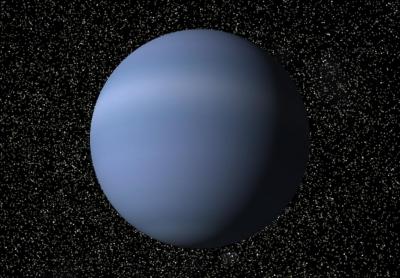BY LETTER
Cryojovian Type worlds
Cold , mostly cloudless gas giants in the outer parts of a planetary system | |
 Image from Steve Bowers | |
| Hackenbush, a cold, cloudless cryojovian in the outer parts of the Pen-y-Ghent system | |
In the outer regions of a young solar system planets form more slowly, and these worlds rarely accrue enough mass to become hydrogen-helium giants. This means that many gas giants in the Neptunian class are cryojovian in nature (sometimes called ice giants or cryoneptunians, to distinguish them from warm and hot Neptunian sized planets in the inner regions of a planetary system). An example is Hackenbush in the Penyghent system. Sometimes, however, large gas giants form in the outer regions of planetary systems from core collapse, in a similar fashion to a companion star; these objects are in fact failed stars, and if massive enough will undergo fusion of deuterium and become brown dwarfs.
Related Articles
Appears in Topics
Development Notes
Text by John M. Dollan and Steve Bowers
Initially published on 31 December 2007.
Initially published on 31 December 2007.
Additional Information
Ice giants at Wikipedia
<{{https://en.wikipedia.org/wiki/Ice_giant,https://en.wikipedia.org/wiki/Ice_giant}}>
<{{https://en.wikipedia.org/wiki/Ice_giant,https://en.wikipedia.org/wiki/Ice_giant}}>






